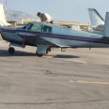-
Posts
190 -
Joined
-
Last visited

65MooneyPilot replied to Immelman's topic in General Mooney Talk

65MooneyPilot replied to OSUAV8TER's topic in Avionics / Parts Classifieds
Tagged with:

65MooneyPilot replied to flyboy0681's topic in Avionics/Panel Discussion

65MooneyPilot replied to OSUAV8TER's topic in Avionics / Parts Classifieds
Tagged with:
Tagged with:

65MooneyPilot replied to flyboy0681's topic in Avionics/Panel Discussion

65MooneyPilot replied to R Van Dyck's topic in Vintage Mooneys (pre-J models)

65MooneyPilot replied to AlexLev's topic in Vintage Mooneys (pre-J models)
We have placed cookies on your device to help make this website better. You can adjust your cookie settings, otherwise we'll assume you're okay to continue.